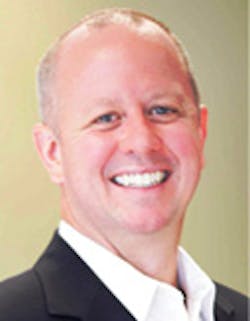Beyond the math: Planning for a successful transition
Rob Ziliak, CFP
You’re reading a column about planning for the eventual transition of your dental practice, so of course it includes a quantitative component—specifically, the math behind a successful transaction. However, it also addresses an equally important aspect of any transition, and that’s the art of becoming emotionally willing to relinquish ownership of your practice.
It’s vital to touch on both planning components, but today I want to skew toward a practice transition’s nonfinancial elements, because those are the most frequently underestimated and often the most surprising to dentists who are taking a step that ultimately culminates in leaving the profession that’s largely defined their adulthood. Even if you may prefer to identify yourself as a loyal spouse, dutiful parent and grandparent, or good friend and neighbor ahead of what you do for a living, your community first thinks of you as the dentist who owns the office nearby. You’re going to evolve from being addressed as “doctor,” the person who signs paychecks at the office and speaks at professional conferences, to “Sue” or “Joe,” the person who plays tennis at the club, volunteers at the church fish fry, and greets the postal carrier while eagerly awaiting the delivery of your mail. The right time to prepare for both aspects of a transition is now, as you’ll need to plan for both financially and well beyond. If it’s done properly, the planning you do today will help you feel secure in your postcareer path, and that it’s worth the decades of financial and sweat equity you’ve invested.
Financial planning for a successful transition and life afterward should be comprehensive, starting as early in a practitioner’s career as possible and at a minimum of three to five years prior to the event. As many studies have shown, investors benefit most from compounding growth over decades. Dentists have additional motivation to start saving and investing at the beginning of their careers, given there’s a 25% chance they’ll need long-term disability benefits (presuming that insurance is in force).1
As a prudent dental practice owner, and through your work with a fiduciary advisor, you should consider implementing 10 strategies to create, manage, and distribute wealth. Integrating financial priorities and strategies across your practice and personal life is crucial. The bottom line of your corporate tax return transfers over to gross income on your personal tax return, so it’s in your best interest to ensure your financial strategy is holistic.
If you have not previously incorporated these strategies, they are as follows:
- Pay yourself first.
- Always know where your money should go.
- Always know where your money does go.
- Properly align your financial priorities (needs, wants, and savings).
- Properly align your loans with the appropriate debt payment ratio.
- Design the best pension strategy for your cash flow.
- Make peace with how much you can afford to spend.
- Take a comprehensive approach to investing.
- Manage risk through proper insurance coverage.
- Establish an estate plan aligned with your objectives.
The science of financial planning (that is, the math) is only one element in a successful transition plan. In his book The New Retirementality, Mitch Anthony wrote an entire chapter about why money is only part of the equation. Anthony appropriately states that when planning a vacation overseas, for example—even one that lasts just a couple of weeks—people will give considerable forethought to planning experiences that will maximize their precious time.2 So, why is it that when planning an often 30-year journey through retirement, many people make only financially focused plans?
Anthony writes, “Individuals who approach retirement in this manner may have a ticket to ride but no road map. While this may sound appealing, they may soon find themselves lost. Existential preparation is more important than economic preparation if you plan on reaping enjoyment with the life ahead.”2
After working with hundreds of dentists over the course of more than 25 years, experience has shown me that very few dentists sufficiently anticipate the emotional toll associated with transitioning a practice. Practice owners are used to building and maintaining patient relationships. They are used to managing the business. Payroll, benefits, equipment, real estate, building facilities, case acceptance rates, optimal scheduling, and profitability benchmarks all become part of the management experience, even if those skills weren’t learned in dental school. Practice owners are used to leading staff. Hiring, rewarding performance, developing staff, and terminating employees are all aspects of the role.
Following a transition, practice owners typically assume one of two roles. The first potential role comes with implementing a continuity plan, and it involves serving as an associate or a partner for a few years or so. This sale could be to a dental service organization (DSO), to an individual, or to a small number of associates. Many benefits arise from this approach, both financial and nonfinancial. A huge benefit is that financial rewards are either captured at once or over the few years agreed upon in the contract. The selling owner can maximize after-tax outcomes by using a custom-designed retirement plan structure, by capturing much of the value as goodwill and, possibly, by employing a deferred sale arrangement. The seller gets to eliminate the headaches of ownership while receiving remuneration for a career of service to the community. The seller can also mentor other practitioners in the office, retain patients (because relationships are rooted), and likely help keep staff.
What’s the drawback? You’re now an employee and a teammate. While speaking at an Academy of General Dentistry event a few years ago, I met a retired dentist who had recently fulfilled his obligations under a continuity plan. When I asked how the conversion into an associateship went for him, he said, “I was shocked at how fast the staff realized I was no longer signing paychecks, and, candidly, it hurt because they didn’t seem to value my input.” Ouch. Are you ready for that?
After working with hundreds of dentists over the course of more than 25 years, experience has shown me that very few dentists sufficiently anticipate the emotional toll associated with transitioning a practice.
The second potential option is really to assume no role at all. It involves securing a succession plan by selling and walking away, typically within a year or less after the transaction date. DSOs tend to avoid this approach because they realize a relationship with the seller retains patients, or goodwill. The seller would likely simply hand over the keys to another individual or a couple of associates, either at closing or shortly thereafter. Financial benefits can still include tax savings from a custom-designed retirement plan and allocation of the selling price to goodwill.
You’ve been a big fish in a small pond for many years. When you’ve devoted 40 to 80 hours per week over decades in an ownership capacity, are you prepared for how circumstances will change if you become a small fish in a small pond? Or, what if you leave the pond altogether on the transaction date? No matter the type of change, you’re going to face a decision that involves transitioning from a leader to the employee of a less-experienced dentist (or DSO), or to becoming a retiree without any time commitments or responsibilities. Pause and ponder this.
You already recognize that formulating a successful, comprehensive financial strategy takes years of commitment and support. If you do not have such a strategy in place, pursue one at your earliest convenience because the financial risk of not doing so is too great. Every bit as important is the need to purposefully plan for life after transitioning your practice. This process takes years. Speak with family members, current retirees, charitable organizations, universities, golf course superintendents, and yoga instructors. Read books. Whatever set of resources you rely upon, plan way beyond the math to achieve a posttransition life that makes the most of your precious time.
References
1. Great-West Financial study of historical disability claims by ADA members. 2014.
2. Anthony M. The New Retirementality: Planning Your Life and Living Your Dreams… at Any Age You Want. Hoboken, NJ: John Wiley & Sons; 2014.
Rob Ziliak, CFP, is an advisory team director at Buckingham Strategic Wealth, a comprehensive wealth management firm with a niche practice area that focuses on financial solutions for dentists and their families. Through a holistic, evidence-based approach to strategic planning, Buckingham helps dentists connect their finances with their values to realize their most important goals. To learn more, please visit buckinghamadvisor.com or contact Buckingham at (888) 470-3064

